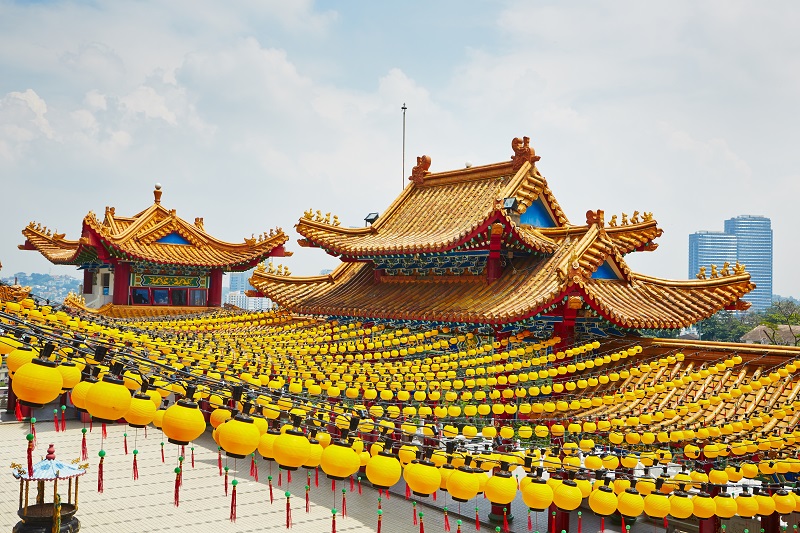
What China Is Known For: A Cultural and Historical Odyssey
China, a vast and ancient civilization, has made an indelible mark on the world stage for centuries. From its rich cultural heritage to its groundbreaking inventions and breathtaking landscapes, China is known for a multitude of aspects that continue to fascinate and inspire people globally. In this article, we will embark on a journey to discover what China is renowned for, delving into its history, culture, traditions, and more.
The Great Wall of China: An Iconic Marvel
One of the most iconic symbols of China, the Great Wall. This stretches over 13,000 miles and has stood for centuries as a testament to human engineering and perseverance. Also, it is a remarkable feat of ancient architecture and a UNESCO World Heritage site that draws visitors.
Chinese Cuisine: A Culinary Extravaganza
Chinese cuisine is celebrated worldwide for its diverse and delectable flavors. From the fiery spices of Sichuan cuisine to the delicate dim sum of Cantonese dining, China’s culinary offerings are a gastronomic adventure. Iconic dishes like Peking duck, Kung Pao chicken, and dumplings have earned a special place in the hearts of food enthusiasts.
Chinese Tea Culture: Timeless Traditions
China is known as the birthplace of tea, and its tea culture is steeped in history and tradition. Famous varieties like green tea, oolong tea, and pu-erh tea are enjoyed globally, while practices like gongfu cha (the art of tea preparation) continue to thrive.
Ancient Philosophy: The Teachings of Confucius and Laozi
China has given the world profound philosophical insights through the teachings of Confucius and Laozi. Confucianism emphasizes ethics, family, and societal harmony, while Taoism, founded by Laozi, focuses on living in harmony with the Tao, or the way of nature.
Innovations and Inventions: Ancient Wisdom
China is known for its historical innovations, including the invention of paper, gunpowder, the compass, and printing technology. These inventions revolutionized the world and had a profound impact on the course of human history.
Chinese Language: A World of Characters
The Chinese language, with its intricate characters, is one of the oldest and most widely spoken languages globally. Learning Chinese characters is a challenging yet rewarding endeavor, and the language is a gateway to exploring the depth of Chinese culture and literature.
Traditional Arts: Calligraphy and Painting
Chinese calligraphy and painting are revered as classical art forms. The elegance and mastery displayed in calligraphy strokes and ink paintings have captivated art enthusiasts for centuries, embodying the essence of Chinese aesthetics.
Majestic Landscapes: Natural Wonders
China’s diverse landscapes are a treasure trove of natural wonders. From the breathtaking karst formations in Guilin to the serene beauty of the Li River, China offers a plethora of scenic wonders that attract nature lovers and adventurers alike.
Traditional Chinese Medicine (TCM): Holistic Healing
Traditional Chinese Medicine, or TCM, is an ancient system of medicine that includes acupuncture, herbal remedies, and various holistic healing practices. TCM has gained global recognition for its effectiveness in treating a wide range of ailments and promoting overall well-being.
Chinese Festivals: Celebratory Spectacles
China is famous for its vibrant and culturally significant festivals. The Spring Festival (Chinese New Year), with its colorful parades, dragon dances, and fireworks, is one of the world’s most celebrated events. Other festivals like the Lantern Festival, Mid-Autumn Festival, and Dragon Boat Festival offer unique cultural experiences.
Terracotta Army: Archaeological Marvel
The Terracotta Army in Xi’an is one of China’s most iconic archaeological discoveries. This vast collection of life-sized terracotta soldiers, horses, and chariots, created over two millennia ago, serves as an incredible testament to China’s rich history and craftsmanship.
Chinese Opera: A Theatrical Tradition
Chinese opera is a captivating and elaborate art form that encompasses various regional styles. Furthermore, such as Peking opera, Cantonese opera, and Sichuan opera. Known for its colorful costumes, intricate makeup, and distinctive vocal performances. Therefore, Chinese opera offers a unique blend of music, dance, and storytelling.
Silk Road: Historic Trade Routes
China’s Silk Road, an ancient network of trade routes, facilitated cultural exchange and commerce between East and West for centuries. The Silk Road is celebrated for its role in connecting civilizations and spreading Chinese silk, art, and innovations across the Eurasian continent.
Pandas: National Treasure
China is renowned as the home of the giant panda, an iconic and endangered species that has captured the hearts of people worldwide. Efforts to protect and preserve these adorable creatures have garnered international attention, making pandas a symbol of conservation.
Modern Achievements: Economic Powerhouse
In recent decades, China has emerged as a global economic powerhouse, with a rapidly growing economy. Also, a significant influence on international trade and technology. Cities like Shanghai and Beijing showcase modern architecture, high-speed rail networks, and technological innovations.
Conclusion
Therefore, China’s influence on the world is multifaceted and profound, encompassing cultural, historical, and artistic contributions. These, that continue to shape global perspectives. Whether it’s the awe-inspiring Great Wall, the tantalizing flavors of Chinese cuisine. Also, the wisdom of ancient philosophers, China’s legacy remains a source of fascination and admiration for people around the world. Therefore, this vast and diverse nation has much to offer. Also inviting curious minds to delve deeper into its rich tapestry of traditions and achievements. This is What China is known for.


